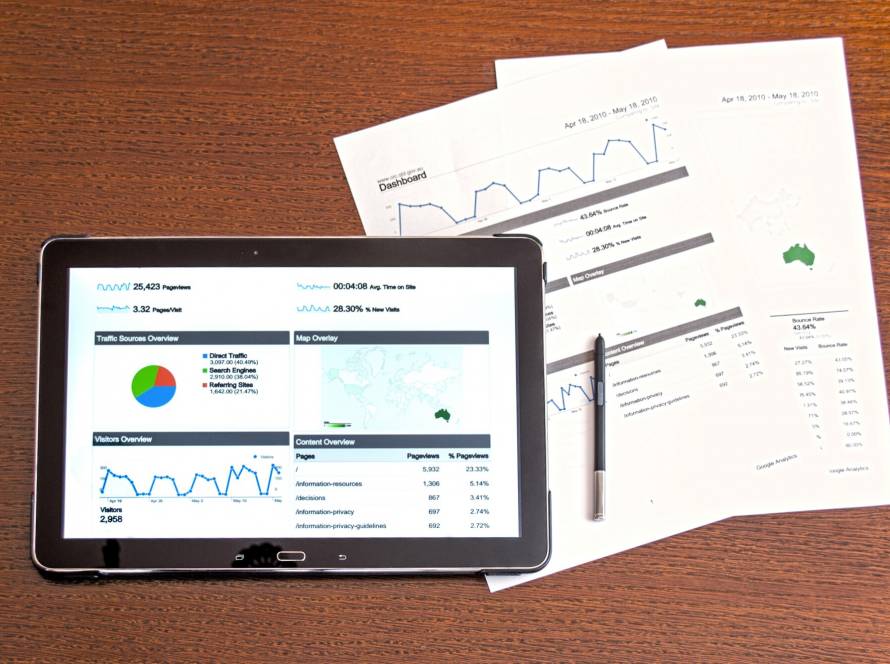As of 2022, it is estimated that there are over 2.5 billion blog posts created each year. Over 10% of the US population now claim to do some level of blogging. So how do you make sure yours gets read and noticed?
One way is by getting an excellent layout to facilitate readability. Read on as we give our 7 tips for a successful blog post layout.
1. Readable Fonts
Amateur blog owners will try to choose fonts that fit with the theme and design of their logos and branding. This is a huge mistake as it is often made at the cost of readability. If people can’t read your text, then the blog fails to serve its purpose.
Reading also needs to be an easy process. Most blogs will be skimmed, and the necessary facts are taken. If you are not aiding this with font choices, people will go elsewhere for information, usually in the direction of your competitors.
Stick with basic fonts, such as Arial and Helvetica. You may choose to pair a serif and sans serif font, but never have more than two fonts on the same page. For the size, stick with a minimum of 16px.
2. Useful Subheadings
Getting subheadings correct is vital for effective blog posts. They work in three distinct ways.
The first is to break up walls of text. Many people are put off by reading in this way. Marked subheadings make it easier to internalize and retain.
It is also a way for the reader to navigate to important sections. Subheadings should be a summary of the parts underneath, so readers know where to go and find what they are looking for.
Lastly, they should include your keywords. This can greatly increase your SEO if they are done correctly and not overstuffed in the article.
3. Provide Value
Your blog posts can be about anything you like and should not follow popular topics. The only rule is that it has to provide value to your customers. How you do this all depends on your goal.
In the past, posts had to follow a rigid set of rules to be considered an effective SEO blog. However, search engine algorithms are now reaching a point where keywords and their use is becoming less important. Natural writing and content value are much more highly sought after.
Think about some of the questions your readers or customers may be asking. You can check keywords to see what is getting typed into search engines. If you already have the traffic, you may even go directly to your visitors and ask them yourself.
From here, write a list of blog titles that may help them. Craft the blogs, then include the relevant keywords on your second edit without overstuffing them.
4. Strong Internal Links
The longer people stay on your website, the better your bounce rate will be. This measure has a huge impact on your SEO, telling search engines how relevant and informative your website is to guests. Any tactic you can use to keep people on the site should be employed.
Even the most well-written post will lose people’s attention span, as it is the nature of humans to have a short attention span. Internal linking, which directs people from one part of the website to another, is a way of keeping people on the site.
Links should be contextual and relevant, so don’t just put them anywhere. Like anything, what people follow should add value and relevance.
5. Master the Call to Action
Every SEO blog post should include at least one call to action. Abbreviated to CTA, this is a line or command for the reader to follow. It informs them what they should do next, and is usually placed at the end of a blog or post.
Without them, readers will drop off and go elsewhere. While it sounds simple, they do work. Asking someone to click here or follow this link keeps them on your website, improving SEO and increasing the chances of turning them into a conversion.
6. Invest in Images
Like headings, images serve several purposes. They can help break up the content and walls of text on a page. Like headings, they should also be an indicator of what the proceeding section of text is about, or should illustrate a point if the text is providing information.
Where many people make mistakes is that they don’t invest in images. If you use poor photos that are grainy or badly shot, it makes your content look amateurish. This blog design error can make people go elsewhere and stop them from coming back.
If you are selling products, this becomes even more vital. The image is replacing the ability to touch and experience that visitors would get in a store.
Many people do not realize that the right images can also drive SEO traffic. As they will appear in search engine image searches, getting high-quality shots and spending time to add the right alt text can bring a high return on traffic.
7. Employ White Space
White space is a fantastic visual aid. It allows text to be seen and digested easier by giving it breathing space. Having white areas can also highlight key pieces of information, making it act as a frame against the darkness of the fonts.
This can often be overlooked when it comes to web design. Just a few menus or adverts alongside your text can make the page look cluttered. Don’t be afraid to opt for ratios as high as 50% white space on your blog.
Experimenting With a Blog Post Layout
When it comes to getting the perfect blog post layout, you need to experiment. Check your metrics whenever you make changes, and see what works best for your readers. Always keep in mind that readability and quality content takes precedence over anything else.
ContentManager.io should be your first step for online content creation. We can provide blogs that will drive traffic to your website. Click here to contact us about all your creative needs.



